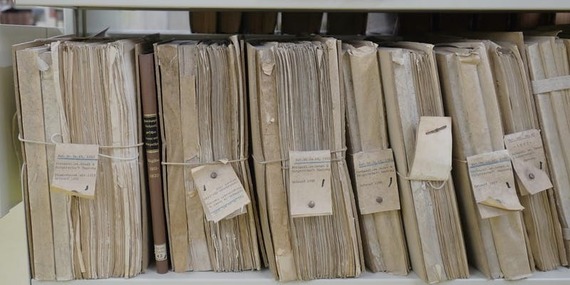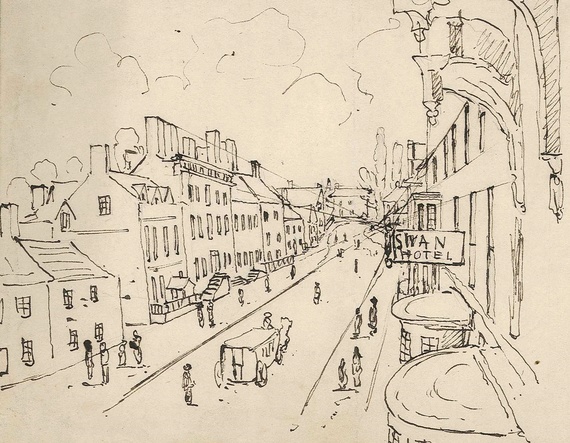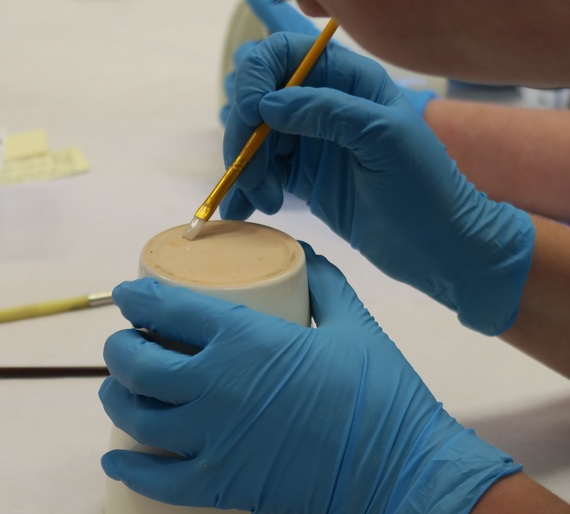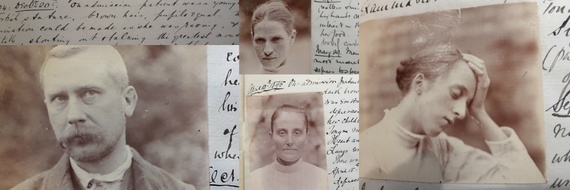Events
 Friends of Staffordshire and Stoke on Trent Archives AGM
Our AGM will be held at 7.00pm on Monday 29 April 2019 in the Staffordshire Record Office, Eastgate Street Stafford. Refreshments will be available from 6.40pm and during the interval between the AGM and the talk.
The speaker will be Dr Nigel Tringham on 'Writing a VCH volume'. Nigel has worked on the Staffordshire Victoria County History for 40 years and he will review his experiences and tell us how a volume gets written. Nigel has worked at Keele University since 1979 and was present in 1993 when the University entered a partnership with Staffordshire County Council to continue the work of the Victoria County History in Staffordshire. Prior to working at Keele Nigel worked as a Research Assistant at St Andrews University, helping to produce an edition of a medieval Scottish chronicle. He holds a PhD from Aberdeen University. Alongside continuing to write VCH volumes at Keele, Nigel teaches and directs the Latin and Palaeography Summer School. For many years he has edited the transactions of the Staffordshire Archaeological and Historical Society, together with those of the Staffordshire Record Society. He sits on the Boards of both Midland History and Staffordshire Studies and he is a member of the Council and Management Committee of the British Association for Local History.
This is a free event and members and guests are welcome. If you are intending to come please inform our Treasurer Malcolm Price so that we can have an approximate idea of the number we need to cater for. Email malcolm.price@virgin.net
 Staffordshire History Day - Saturday 11th May
Join us at Entrust HQ, Riverway Centre, Stafford on Saturday 11 May to hear our keynote speakers Dr Nigel Tringham (VCH Staffordshire, Keele University) 'A History of Tamworth' and Ruth Singer 'Criminal Quilts'. The day also features updates on a range of research projects and the latest news from the County Archaeologist and Archives and Heritage Service. Refreshments and lunch are included. Tickets cost £25 and must be booked in advance. For booking details and to find out how to get the full programme for the day visit our website.
 View from the High House Stafford, 19th century D256-34-3
We recently discovered this little sketch in the archive collection, which fits in nicely with the Greengate Street theme of our new Reading Room exhibition at Staffordshire Record Office. If you get a chance, come along and have a look!
The sketch dates from around the mid-19th century, and was made looking southwards along Greengate Street, Stafford, from the viewpoint of an upper floor window at the Swan Hotel. Whilst the Swan is still recognizable today, most of the other buildings in the drawing have long gone. The building on the left with the three dormer windows is the old Alexandra Hotel (formerly Lloyd’s Wine Vaults), demolished in 1962 and now the site of the Superdrug store. Just to the left, the small shop which was once a butcher’s on the corner of Tipping Street has since been replaced by the Oddfellow’s Hall building. A notable and long-vanished feature of this sketch are the stone steps leading up from the street to the house entrances and the huge chimneys rising above the rooftops. Horse-drawn carriages are also something of a variety in modern day Greengate Street!
 Behind the Scenes at the Museum - Marking and Labelling the Collection
Every item in the Staffordshire County Museum Collection has a unique reference number, known as an accession number. This links the object with the information that we hold about it; paperwork, storage location, donor details, associated items and most importantly its story.
Once the object has been formally accessioned and given a number it is physically marked. We do this in such a way that the number is secure but could be removed if necessary without leaving a trace or damaging the item in any way. It is important that the number is placed discreetly but is easy to find. On a ceramic vessel, for example, the number would be located on the base. Textiles are marked with cotton tape which carries the accession number. The tape is sewn into the garment. Paper items are always marked with pencil.
The majority of museum objects are marked using a clear solution of Paraloid B72. The number is written on this in permanent black ink and another coat of the Paraloid solution applied on top.
Once marked a label carrying the same information is tied to the item or placed with it in the collections store so that each object's number can located easily with minimum disturbance or handling. The process enables the museum team to locate items and to maintain the records of over 30,000 objects in our care.
 Extracts from the Stafford Asylum Case Books, 1890s
Staffordshire's Asylums Project
With Mental Health Awareness Week taking place from 13 to 19 May 2019 we take a moment to highlight our latest project exploring Staffordshire’s Asylums.
In the modern world, this national week is raising awareness of mental health and mental health problems and inspiring action to promote the message of good mental health for all. In 1818 Staffordshire’s first county Asylum opened in Stafford. It was described at the time as ‘an enviable monument to the humanity and liberality of the present enlightened age’. Whether the views, diagnoses or treatments would now be perceived as ‘enlightened’ is debatable, but this represented a shift in the way mental health patients were perceived and treated, and a movement to try to explore and understand mental health issues in a new way.
Following on from the opening of Stafford in 1818, Burntwood opened in 1864 and subsequently Cheddleton in 1899. This Wellcome Trust funded project will be exploring the case notes of thousands of patients treated in these three County Asylums, from 1818 through to the early 20th century. A database of historic information will then be made available to the public. Patient notes from case files less than 100 years old will not be available to the public but will become available as they pass the 100 year threshold.
As we start to extract key information we have been interested to discover that diet and alcohol played a major part in treatment, alongside emetics, purgatives, medication and electrification which are perhaps more commonly known. We will be looking at treatments as one of the themes of our project blog, which will go live on Monday 13th May, to coincide with the beginning of Mental Health Awareness Week. We will also be looking for your contributions; so if you have anything to share or are just interested in the project and the history of the asylums and mental health treatments then keep an eye out for the launch of our blog which will be at https://staffordshireasylumrecords.wordpress.com/
Our aim is to keep you updated with the latest developments and events. If you do not wish to receive this newsletter please use the 'unsubscribe' button at the bottom of this page.

|